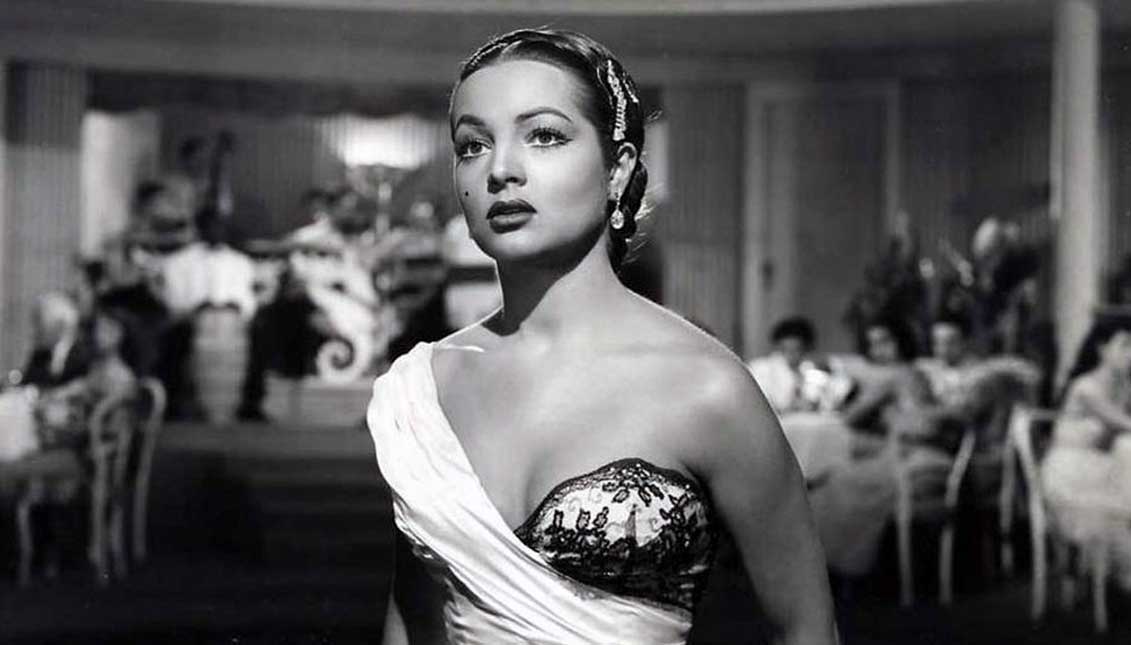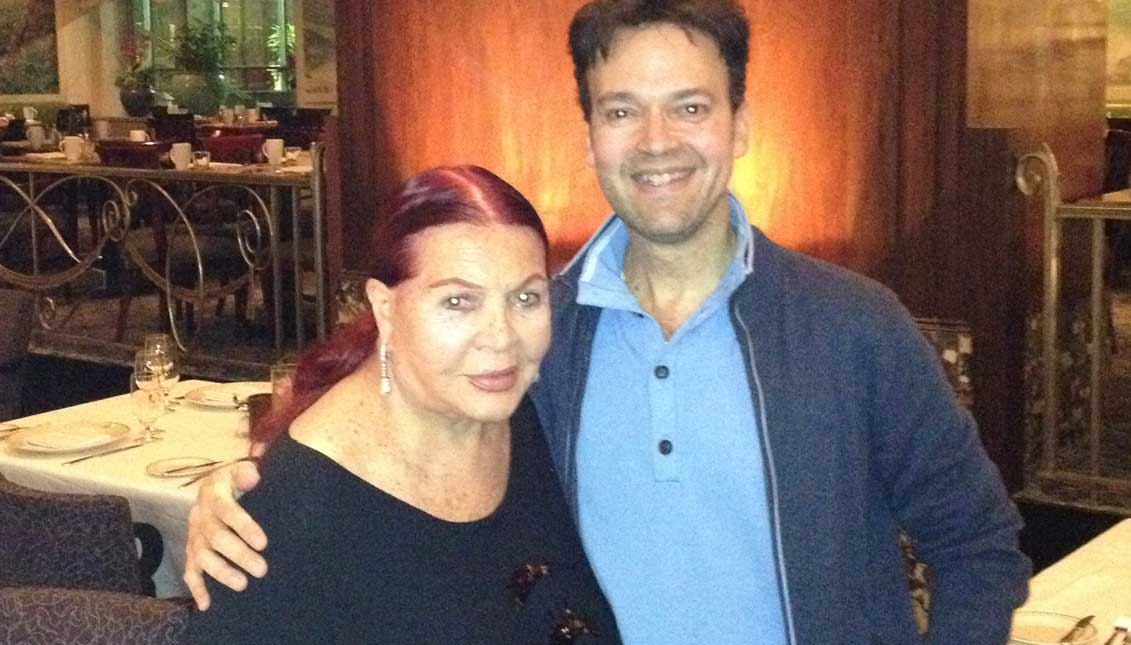
New Sara Montiel biography is being written in Philadelphia
María Antonia Alejandra Abad Fernández died five years ago — but the rest of the world will soon get to know the Spanish actress and singer who conquered…
Sara Montiel was her stage name and with it she toured the world, making history in the film industry in Spain, Mexico, and Hollywood. The artist, who started acting at age 16, appeared in about fifty films and recorded nearly 500 songs.
"Sara was a woman who did what she wanted. Nobody could with beat her: neither Mexico, nor the United States nor the Franco regime [in Spain]," says Israel Rolón-Barada, a Spanish professor at Drexel University and a friend of Montiel during her last years of life.
Rolón-Barada refers to the indomitable character of the Iberian superstar. To fully understand and value Montiel’s legacy,he says, her career must be viewed in terms of its four key stages.
The first was as a novice actress in the Spain of the 1940s, an impoverished country that had taken a step back in women’s civil rights under the dictatorship of General Francisco Franco.
According to Rolón-Barada, Montiel was ahead of her time, a post-war woman who had to fight to be a protagonist in a society that had relegated her to play the role the Catholic Church commanded: a good mother, a good wife, a good housewife.
Montiel managed to make 14 films in Spain before age 21, barely knowing how to read and write. To professor Rolón-Barada, "the lack of academic training can explain why Sara didn’t have an automatic success during that first phase. She was very young and very weak facing seasoned actresses like Imperio Argentina or Amparo Rivelles.”
The second moment of her career began in 1950, when the actress and her mother moved to Mexico in search of better opportunities. Mexico was the mecca of the Latin American film industry and was in the middle of its golden age.
There, Montiel got in touch with a circle of exiled Spanish intellectuals and improved her literacy skills with the help of poet León Felipe.
Rolón-Barada affirms that it is in Mexico where Sara's innate talent fused with her good luck — “an incredible luck because there she gets to work directly with Pedro Infante, who is at the peak of his career, and with Agustín Lara, the number one composer of Latin American music."
Next to Infante, Montiel starred in films like Necesito Dinero, Ahí viene Martín Corona (Little Love of my Life), and El Enamorado (all in 1952). "She represented a challenge — she was the woman who broke the molds of that time and challenged her husband, a challenge to the Mexican “macho” and the Hispanic male," says the professor.
In Mexico, she learned and evolved until she starred in Piel Canela (1953), a role that was made for her and film made to fit her and that leveraged Sara towards what would be, according to Rolón-Barada, the third stage of her career: Hollywood.
"She does not go to Hollywood to look for a job or to knock on doors, but Hollywood comes to her to offer her contracts," he affirmed.
Montiel debuted without knowing English in American film industry in 1954, playing the role of Nina in Vera Cruz, a western starring Gary Cooper and Burt Lancaster. The film was followed by blockbusters such as Serenade (1956) and Run of the Arrow (1957).
It was in the mecca of American film industry –and consolidated as a world star– when Montiel's career began to stagnate.
"She fell into the same problem that many others experienced: she had two possibilities, she was being offered roles as Mexican or as American Indian," says Rolón-Barada. “Because that stereotype existed, once they labeled her that way, they continued to see her as only that."
Seven years after having left her mother country, Montiel returned to Spain and it was at that time —the fourth stage in her career —that the artist established herself as one of the most important actresses in the history of Spain.
There, she starred in El Último Cuplé (The Last Torch Song, 1957), a film that according to Rolón-Barada "changed her life because[with it] she achieves total success with a minimal budget and [also] brings back the musical, a genre from the 1920s.”
El Último Cuplé was followed by blockbusters like La Violetera (1958), Mi Último Tango (1960), La Bella Lola (1962), White House Nights (1963) and La Mujer Perdida (1966).
RELATED CONTENT
Sara Montiel died in Madrid on April 8, 2013, at 85 years of age and with a public life known A to Z by her followers and the media.

However, three years ago a biography that promises to "reveal the hardest and difficult aspects of life that she had to face in order to become Sara Montiel," began to be “cooked over a slow fire” in Philadelphia, where Dr. Israel Rolón-Barada lives and teaches. Rolón-Barada was an admirer of Sara during his adolescence, a friend of the superstar during her last years of life, and has now become her biographer.
The goal of the book, with a preliminary title of "The Cost of Being Sara Montiel,” is in the author’s words "to explain her real life trajectory: we all know how beautiful she was, the immense volume of her cinematographic and musical legacy, but we don’t know the difficulties and very hard things that this woman had to go through to achieve her goal of being a professional actress."
Rolón-Barada recalls that his interest in Sara began very early in his life during his teenage years in San Juan, Puerto Rico. There, every day after school, he went with almost religious discipline to the daily appointment he had with Hispanic cinema at his house.
The TV show was called “Cine de la tarde con Pilar Arenas,” broadcasted on Channel 2.
"We used to watch the movies and then the next day we commented and sang the songs. That's how my admiration for Sara Montiel began," Rolón-Barada remembers.
In 2001, while doing a Ph.D. in Málaga, Spain, he met her in person during a presentation and signing of her autobiography, Memorias, Vivir es un Placer.
In 2011, the Modern Language Association of America organized its annual conference in Seattle, which included- a panel called “From Conchita Piquer to Isabel Pantoja: Divas and the Spanish Cultural Imaginary.”
Before the panel, Rolón-Barada managed a two-day interview with Sara Montiel on the island of Tabarca, a situation that, according to the professor, amused the diva because it came only 48 hours after their first talk on the phone, after which Rolón-Barada flew from Philadelphia to Spain to meet her in the middle of the Mediterranean Sea.
Rolón-Barada says that this biography differs from others that have come out about Montiel because his approach to documenting her life is as an academic and cultural historian, resulting in a tone and content distinct from the commercial or sensationalist elements of other publications.
For now, the professor needs to work on a couple of details and conduct a few additional interviews in Mexico and Spain before finishing his version of Montiel's life, which he expects to publish at the beginning of next spring.











LEAVE A COMMENT:
Join the discussion! Leave a comment.